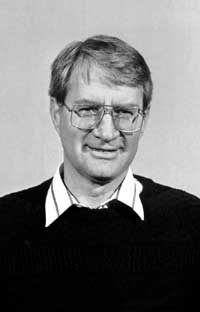|
Alaska Subsistence
A National Park Service Management History |

|
Chapter 8:
NPS SUBSISTENCE MANAGEMENT ACTIVITIES, 1990-PRESENT (continued)
E. Subsistence in the Legislature, Part I: the Case of Glacier Bay
One of the most contentious subsistence-related issues that the NPS dealt with during the 1990s concerned subsistence harvesting in Glacier Bay and in adjacent waters within Glacier Bay National Park. As noted in Chapter 6, provisions within ANILCA had made it clear that subsistence uses in these areas were prohibited. The State of Alaska, however, had kept the issue alive, and owing in part to actions by Fish and Game Commissioner Don Collinsworth, the NPS and Hoonah residents narrowly avoided a confrontation over the issue during the summer of 1989.
That fall, many Hoonah residents renewed their intention to press for subsistence access to Glacier Bay, and before long, the NPS and the ADF&G were once again at loggerheads. Commissioner Collinsworth, as he had in 1989, moved to issue subsistence permits for Glacier Bay; and the state legislature, in a similar vein, passed a resolution asking that the NPS "amend its regulations in order to ... expressly provide for subsistence uses in the Park." The NPS, in response, told state authorities that the agency had "no administrative authority for allowing subsistence activities in the park." Having few other alternatives, it tried to dampen what had become a high-profile issue and announced that it would be "lenient in its enforcement" of the subsistence regulation. The agency encountered few enforcement problems that summer. [56]
By this time, authorities on both sides of the issue recognized that the only way to change the existing state of affairs—that is, the only way for local residents to gain legal, long-term subsistence access into Glacier Bay—lay in the passage of federal legislation. [57] Alaska's Congressional delegation took no immediate action in the matter. But in August 1990, the Alaska Wildlife Alliance filed suit against the NPS in the Anchorage District Court, claiming that the agency, among other things, was allowing illegal commercial and subsistence fishing to occur. A month earlier, on July 1, the NPS—perhaps knowing of the imminent AWA suit—made it known that it intended to issue a proposed rule regarding commercial fishing in the bay; that rule would state that commercial fishing in the bay's few wilderness waters would be immediately prohibited and that commercial fishing in the remainder of the bay be prohibited after December 1997. (Subsistence was not addressed in the proposed rule.) The Congressional delegation stridently opposed this proposed rule, which was issued on August 5, 1991. [58]

|
| Marvin Jensen served as the superintendent of Glacier Bay National Park and Preserve from 1988 to 1995. Fishing issues, both commercial and subsistence, remained controversial throughout this period. NPS (AKSO) |
Anticipating that rule, both Senator Frank Murkowski and Representative Don Young introduced bills that summer that would authorize both commercial fishing and subsistence uses in Glacier Bay. (One other provision in these bills was related to cruise ship entry.) In September and October, the NPS held hearings on the proposed commercial fishing regulations in eight Alaskan communities as well as in Seattle. The following May, Murkowski's and Young's bills were addressed by their respective subcommittees; they were passed by voice votes in June and advanced to the full committee. In October 1992, however, the bill collapsed in the Senate during the waning hours of the 102nd Congress. [59] The status quo remained, at least for the time being. Although similar bills would be resurrected in the 103rd Congress, they would be no more successful than their predecessors. [60]
During the fall of 1992, in the midst of last-minute negotiations over Senator Murkowski's Glacier Bay bill, an incident took place in the bay that started a whole new round of controversy related to subsistence fishing's legal status. On October 6, NPS rangers observed Gregory Brown, a Tlingit residing in Hoonah, hauling a dead hair seal from a skiff to a seine boat. Inasmuch as the action took place near Garforth Island, which is located near Adams Inlet within the bay, the rangers cited Brown for violating the prohibition against subsistence harvesting. Brown readily admitted that he had killed the seal; it was needed, he claimed, for a "payback party" (a kind of potlatch) for a recently deceased relative. Given these circumstances, Brown's citation aroused strong feelings in Hoonah. The Huna Traditional Tribal Council soon sent a letter of protest to Alaska's Congressional delegation; it charged that "we are made criminals for our food" and reiterated longstanding concerns that the NPS was insensitive to the Hoonah's cultural and historical ties to Glacier Bay. [61]
Those who defended Brown checked the various federal regulations that pertained to the NPS's management of the park's marine waters. They evidently discovered that a 1987 technical amendment to the agency's 1983 regulations meant that the regulations specifically applied to privately owned lands but that it was "silent as to the applicability" of the regulations on other "non-federally owned lands and waters" within the boundaries of park areas. Therefore, the regulations as they existed in 1992 "had the unforseen and unintended affect [sic] of rendering ambiguous the applicability of NPS regulations to navigable waters in Glacier Bay National Park." Because the NPS did not have clear regulatory authority over the navigable waters of several NPS units—of which Glacier Bay was just one example—the Interior Department moved to dismiss the case in December 1993. [62]
The loss of this case, of course, meant that the NPS had no clear authority to enforce a broad range of regulations pertaining to Glacier Bay's marine waters. In order to reassert that authority, Russel Wilson of the NPS's Alaska Regional Office was asked to draft an interim rule that established the federal government's clear regulatory authority without addressing the larger question of who owned the park's submerged lands. This rule, which was promulgated "to insure the continued protection of park wildlife ... and to clearly inform the public that hunting continues to be prohibited," was published in the Federal Register on March 29, 1994; it became effective the same day and was to remain valid until January 1, 1996. The public was given ninety days—until June 27, 1994—to comment on the interim rule. After receiving and considering those comments, the NPS published a Proposed Rule, which was broadly applicable to units throughout the National Park System, in December 1995. [63] The rule called for another round of public comments, to end in February 1996, and during that period both the Alaska Attorney General and the state legislature (among other entities) submitted comments. Five months later, the NPS issued a final rule on the subject. The NPS, with this rule, thus regained the legal ability to enforce subsistence (and other) regulations on Glacier Bay's waters while sidestepping the complicated issue of submerged lands ownership. [64]
Meanwhile, NPS officials moved to curtail commercial fishing within the bay. As noted earlier in this chapter, activities during the early 1990s had led to a standoff; the NPS—faced with a wall of protest at a series of public meetings—had been unsuccessful in promulgating a commercial fishing ban in Glacier Bay National Park, but Alaska's congressional delegation had likewise been unsuccessful in two successive Congresses in implementing a bill that would have allowed subsistence fishing and mandated the continuation of commercial fishing. A small part of that standoff was resolved in conservationists' favor in 1994, when District Judge H. Russel Holland ruled, in Alaska Wildlife Alliance's lawsuit against the NPS, that commercial fishing was prohibited in the park's wilderness waters. Three years later, this decision was upheld in the Ninth Circuit Court of Appeals. In other matters related to Glacier Bay fishing, however, the standoff continued. What eventually emerged from this standoff was a series of informal workshops among the major stakeholders—Interior Department officials, commercial fishermen, area residents, and others, collectively known as the cultural fishing working group—that made major strides in resolving outstanding issues. These meetings continued until the winter of 1997-98. [65]

|
| Frank Murkowski has been Alaska's junior U.S. Senator from 1981 to the present time. He introduced bills in 1991, 1993, 1997, and 1999 that would have legitimized or expanded fishing rights in Glacier Bay. Office of Sen. Murkowski |
In April 1997, NPS officials decided that they would once again issue a proposed rule that called for a termination of commercial fishing in Glacier Bay. The rule was similar to that proposed in August 1991, but it called for a 15-year rather than a 7-year phaseout period. The NPS's action, predictably, resulted in Senator Murkowski submitting a section into a larger bill (authorizing ANILCA amendments) that would have legalized both subsistence and commercial fishing in the bay. This bill was similar to bills that the Senator had submitted in both 1991 and 1993. [66] During the next several months, NPS staff began preparing an environmental assessment related to its proposed rule, and the agency held several public hearings in area communities as part of that effort. The NPS issued a final report on that topic in April 1998.
Before the NPS could issue a final rule, however, Senator Stevens was successful in implementing a compromise between the NPS's and Murkowski's position. In the waning hours of the 105th Congress, Stevens inserted a clause (Section 123) into the huge Omnibus Consolidated and Emergency Supplemental Act for Fiscal Year 1999 (P.L. 105-277), which was signed by President Clinton on October 21, 1998. Stevens's compromise allowed commercial fishing to continue unimpeded outside of Glacier Bay proper; within the bay, it delineated zones where commercial fishing would be prohibited. (The section made no mention of subsistence issues.) [67] Senator Murkowski and Representative Young reacted to the compromise by introducing legislation on March 2, 1999 that would have allowed commercial fishing to continue. (That bill remained alive for most of that session before stalling.) Senator Stevens, however, was more successful. In May 1999, Stevens was able to insert a paragraph (Section 501) in the 1999 Emergency Supplemental Appropriations Act (P.L. 106-31) that provided a $23 million compensation package for commercial fishers who were impacted by the closures outlined in the October 1998 bill. Given those mandates, NPS officials began enforcing these closures in non-wilderness waters on June 15, 1999. (Enforcement of closures in wilderness waters had begun four months earlier.) [68] In the light of the two recent congressional measures, the agency re-issued a proposed rule on August 2. The new proposal proved uncontroversial, and a final rule on the subject was issued on October 20. [69]
Although Alaska's Congressional delegation was unable to overturn the ban on subsistence uses in Glacier Bay, park officials became increasingly sensitive to local concerns (some of which related to subsistence issues) and began meeting with local residents on items of mutual interest. A major outcome of a series of meetings with Hoonah residents was a Memorandum of Understanding, signed on September 30, 1995 and effective for five years, between Glacier Bay National Park and Preserve and the Hoonah Indian Association. The MOU had several objectives: "to formally recognize our government-to-government relations and recognize areas of mutual concern and support, establish a framework for cooperative relationships, and promote communication between both parties." Since that time the Hoonahs have discussed with NPS officials a number of subsistence-related concerns—a cultural fishery program, the gathering of berries and gull eggs, and other matters—which the agency has attempted to accommodate whenever possible. [70] The MOU was updated for an additional five years on September 29, 2000.
| <<< Previous | <<< Contents >>> | Next >>> |
alaska_subsistence/chap8d.htm
Last Updated: 14-Mar-2003